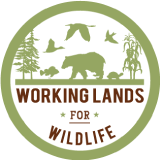by
Web Editor
—
published
Mar 30, 2021
—
filed under:
Resilient Economic Agricultural Practices,
Research,
REAP,
USDA,
Science and Research Products
REAP (Resilient Economic Agricultural Practices), formerly known as the Renewable Energy Assessment Project, was initially organized to quantitatively assess the impacts of crop residue (e.g., corn stover) on soil properties. The project's current vision is to revitalize soil health and resiliency, thereby enabling soil resources to meet expanding societal demands while safe-guarding planetary health. Goals include 1) Identifying physical, chemical, or biological parameters and index tools that quantify management effects on carbon sequestration and soil health; 2) Conducting coordinated, quantitative multi-location comparisons of business as usual vs. improved management practices designed to enhance nutrient use efficiency and soil health; 3) Identification of critical indicators and index tools to quantify site-specific soil health and water quality effects; 4) Developing, expanding, and coordinating among ARS teams providing data and databases needed to sustainably supply cellulosic-based bioenergy feedstock and other national natural resource and agricultural challenges.
Located in
Resources
/
General Resources Holdings


